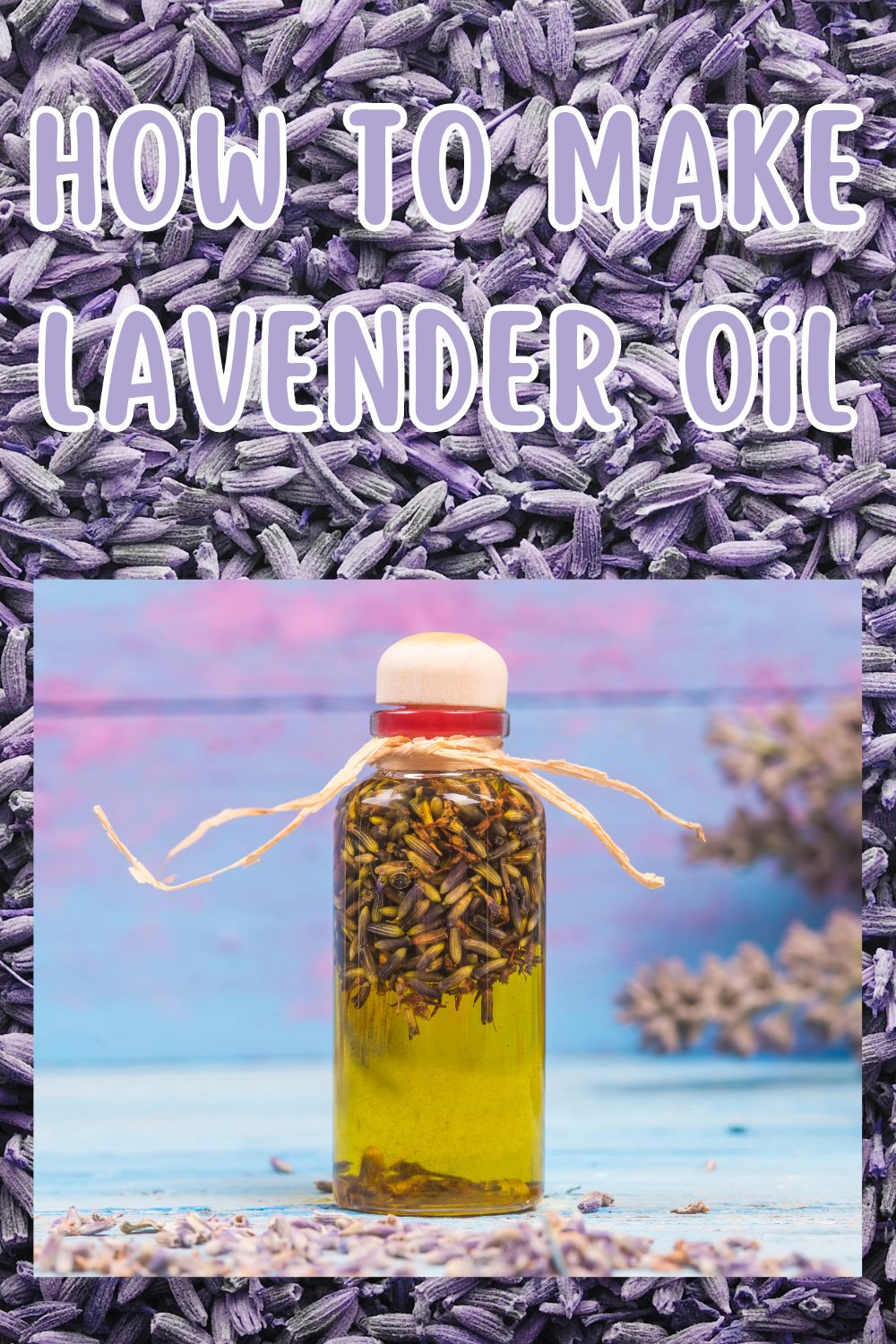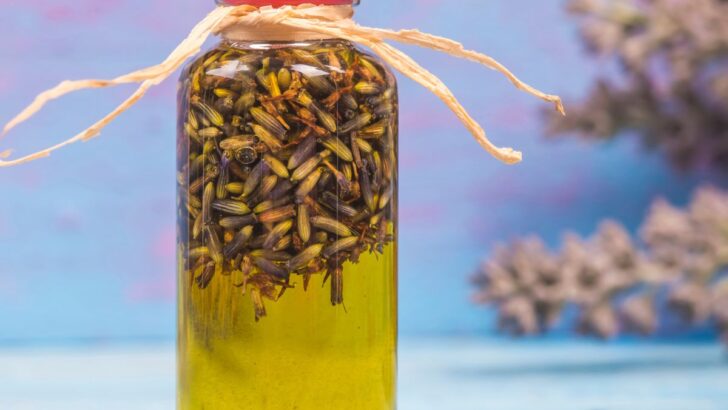While lavender essential oil is difficult to make at home on a small scale, homemade lavender-infused oil is easy and accessible. With just four simple steps and materials you likely already have in your kitchen, you can make your own soothing lavender oil to use as-is or to make salve, lip balm, soap, and more. See how to make lavender oil and five ideas for what to do with it.
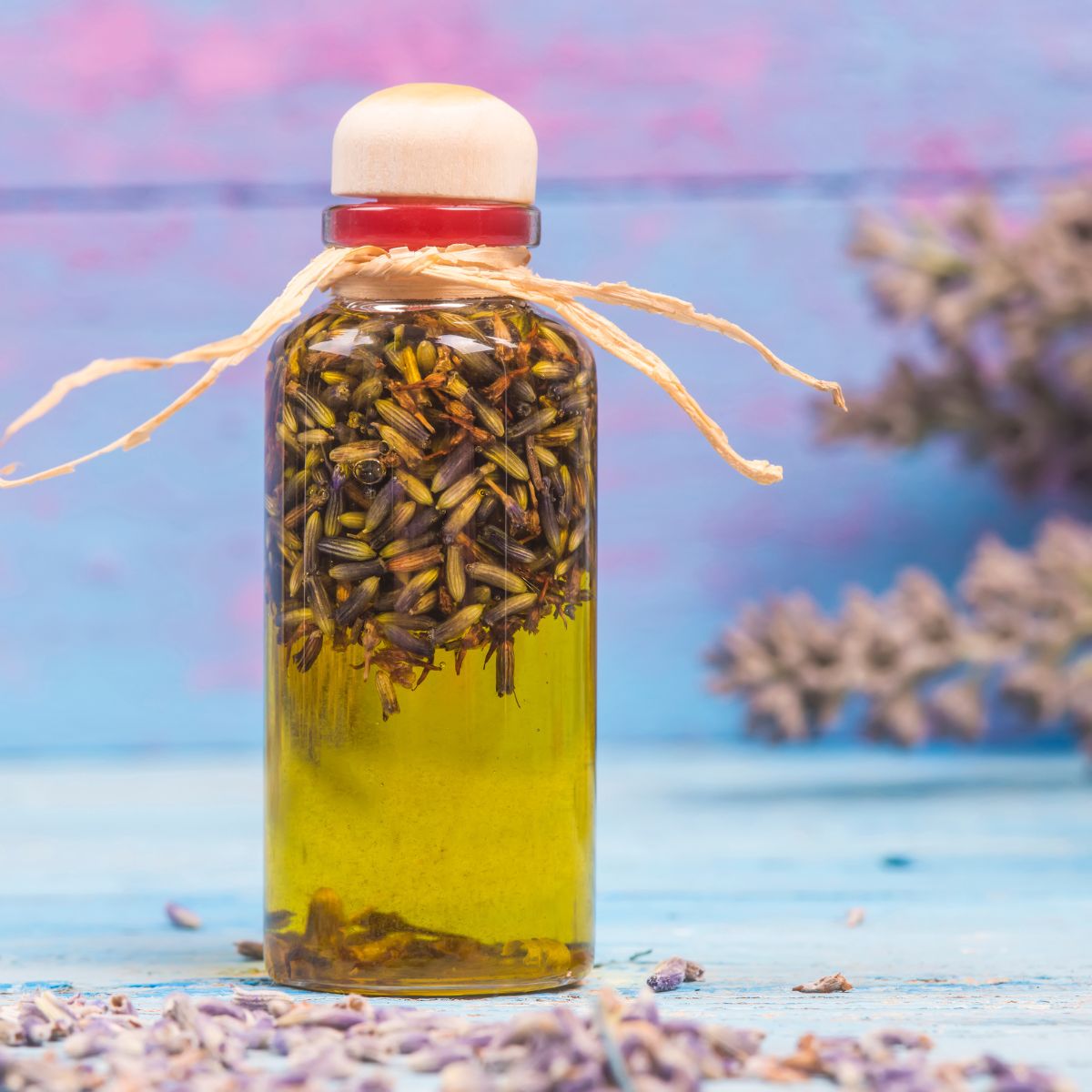
What is Lavender Oil?
Lavender oil, or lavender-infused oil, is made by steeping lavender in a carrier oil, like olive or almond oil. This process infuses the oil with the essential oils from the lavender, imbuing it with the benefits of the plant. Lavender oil can be rubbed directly onto the skin, poured into a bath, or used to make other products like creams, salves, balms, or soaps.
On the other hand, lavender essential oil, a strongly scented liquid in tiny bottles, is extracted through a complex distillation process. It does not contain any carrier oils, just the volatile oil from the plant itself. Significantly more lavender is required to extract essential oil than to make lavender-infused oil.
So, in a nutshell, lavender essential oil is extracted while lavender oil is infused.

Buy How to Grow Lavender for Fun and Profit
Benefits of Lavender Oil
You are likely already familiar with the calming effects of lavender’s sweet fragrance. In addition to its stress-relieving properties, lavender is anti-inflammatory and antibacterial. Lavender oil can help heal rashes, insect bites and stings, burns, acne, scrapes, and more. It even deters some insect pests, like flies and mosquitos.
Best Lavender for Making Infused Oil
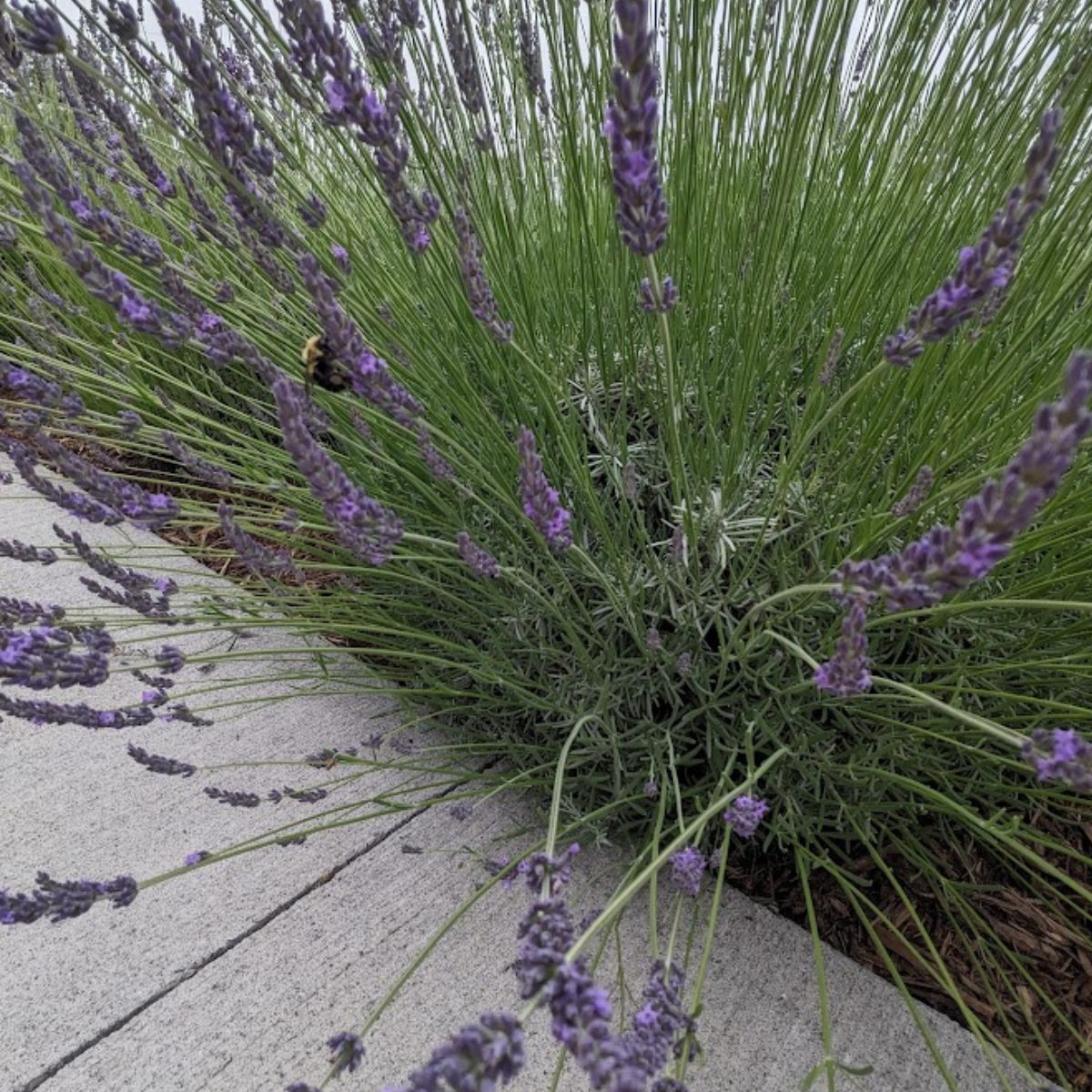
Any lavender can be used to make lavender oil. However, oil infused with English lavender (Lavandula angustifolia) varieties, like ‘Hidcote’ or ‘Munstead,’ tends to have the sweetest fragrance. Many people like lavandin (L. x intermedia), such as ‘Grosso’. French and Spanish lavender typically have a more herbaceous or even bitter scent and flavor, but feel free to experiment and see which type of lavender you prefer to infuse oil with!
Both leaves and buds, either dried or fresh, can be used to make lavender oil. However, you will likely have the best results using dried buds, as fresh lavender can mold if it sticks out of the oil, which it probably will.
What Oil Should You Use to Infuse Lavender?
You will also need a carrier oil to make lavender oil. Carrier oil is just a fancy term for the oil you infuse with lavender. The specific type of oil you choose will depend on what you ultimately want to use it for and your personal preference. It must be liquid at room temperature, and organic, unrefined, cold-pressed oil is usually best.
You’ll want to choose an edible oil for culinary uses, such as dressings, marinades, and baking. For skincare purposes, choose an oil that won’t clog your pores and is most compatible with and beneficial for your skin type. Grapeseed oil and almond oil are popular choices for topical use.
If you’re unsure where to start, extra-virgin olive oil is a great all-purpose option, nourishing in topical (skin) and internal (food) applications. We’ll explore specific ways to use lavender oil at the end of this article.
How to Make Lavender Oil
To make lavender oil, you will first need to gather a few materials:
- glass jar with a lid
- dark glass bottle with a lid
- fine mesh sieve
- cheesecloth (optional)
- funnel
- dried lavender buds
- oil
- Fill a glass jar ¾ full with lavender buds. Your jar size will depend on how much oil you want to make. The first time you make lavender oil, you might want to start with a half-pint jar to see how things go. The amount of lavender doesn’t need to be exact; loosely fill the jar more than halfway but less than completely full.
- Pour oil over the lavender. Fill the jar, ensuring all the buds are covered and have room to move around freely.
- Cover with a tight-fitting lid. Place the jar in a warm, sunny windowsill and let it sit for one to three weeks. For best results, give it a gentle shake occasionally — once a day or at least a couple of times a week — to mix things up.
- Strain the oil. Once the lavender has had time to infuse the oil, pour the contents of a jar through a mesh strainer. Line the strainer with a cheesecloth to reduce sediment as much as possible. After pouring the oil through, squeeze out any remaining oil. Finally, pour the strained oil into a dark glass bottle using a funnel.
How to Store Lavender Oil for Optimal Shelf Life
Lavender oil should be stored in a clean, dry glass container with a tight-fitting lid in a cool, dark place, such as a kitchen cabinet (away from the stove and oven). While a simple canning jar works fine, a dark glass bottle is best.
Check the “best by” date on the original bottle of the carrier oil you use; most have a shelf life of about one to two years. Using fresh lavender may reduce the shelf life to six to 12 months due to the moisture content. When in doubt, sniff the lavender oil; if it smells off, it likely has gone rancid and should be discarded.
Ways to Use Lavender Oil
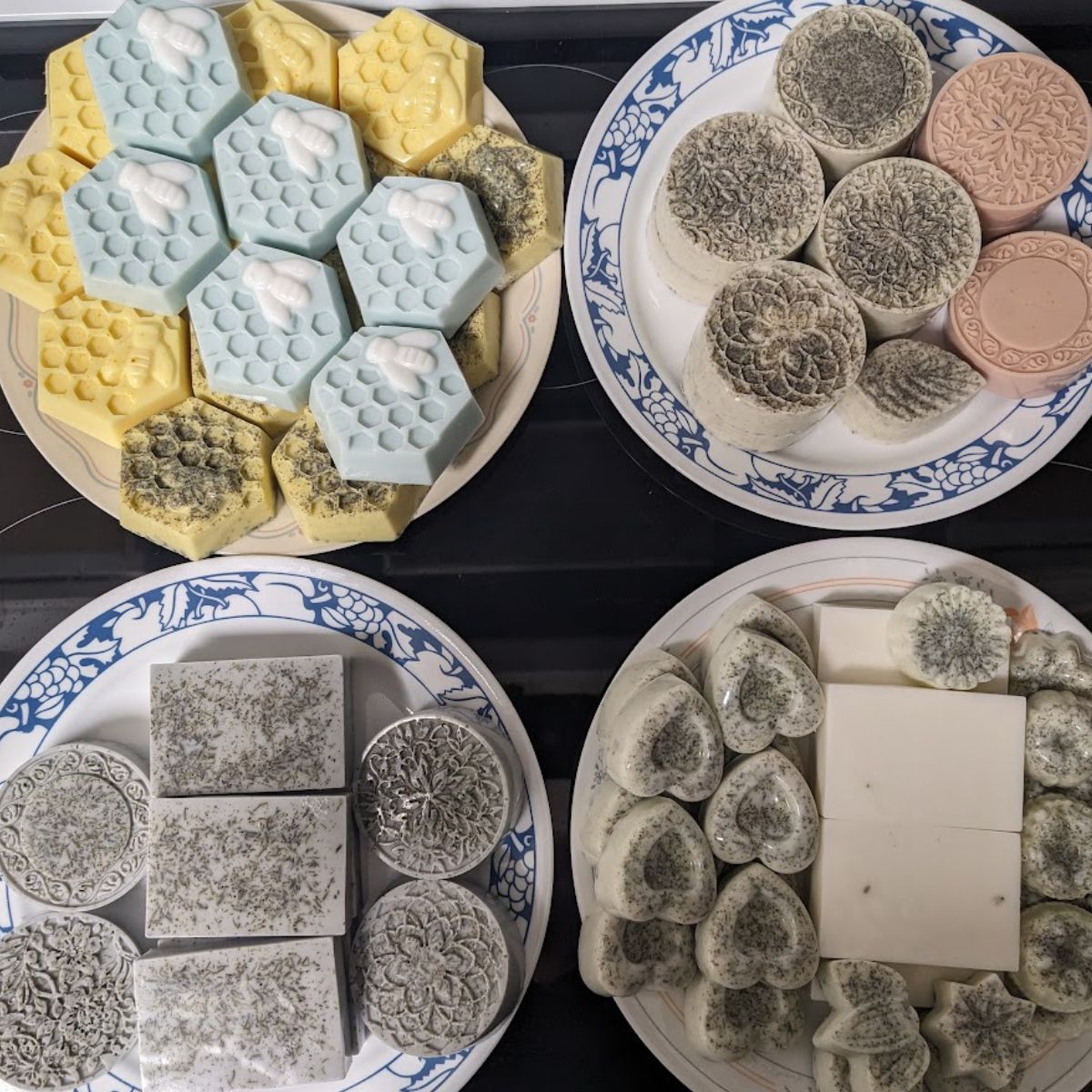
- Lavender oil can be used on its own or as an ingredient in another product. Rub a few drops of lavender oil on your face as a moisturizer, or use it on the rest of your body as a general moisturizer or massage oil.
- It can also be applied directly to burns, insect bites, rashes, scrapes, and other areas needing healing or massaged into your wrists, neck, and temples as a relaxant. Put some in an essential oil roller for easy application.
- Many homemade skincare products contain oil as a base ingredient, and lavender oil is a great option. Use it to make healing salve, body butter, soap, lip balm, and more.
- If you enjoy the taste of lavender, use lavender oil in recipes that call for oil, such as marinades, dressings, and baked goods. Remember to use an edible carrier oil, and pay attention to which is best used in high-heat applications if you plan to cook or bake with it (as opposed to a cold salad dressing).
- Lavender oil can also be used to make natural cleaning products. Its fresh scent and antibacterial properties are perfect for cleaning. Use lavender oil to make an all-purpose cleaning spray, wood polish, and more.
There are many ways to use lavender oil, and it’s incredibly easy to make! If you love lavender, try this simple recipe and discover the countless benefits of lavender-infused oil.
Learn More About Growing And Using Lavender
- how to grow lavender for profit
- how to collect lavender seeds
- tips for growing lavender in pots
- how to store dried lavender
- 7 culinary lavender varieties
